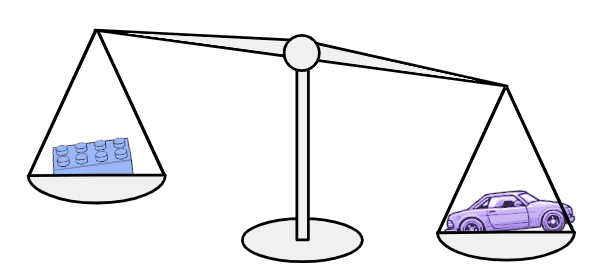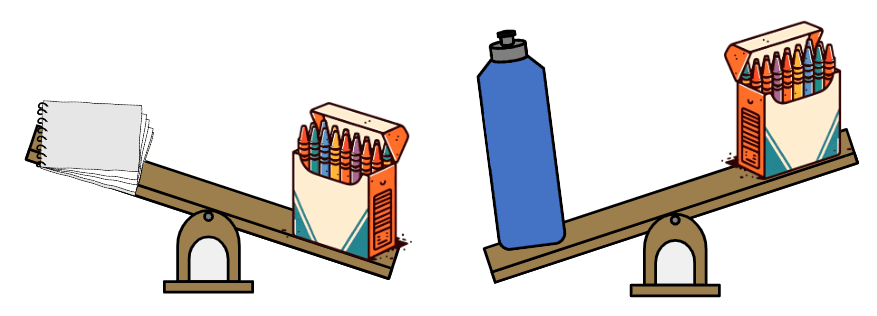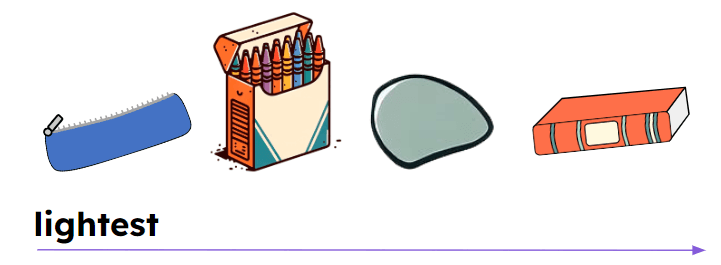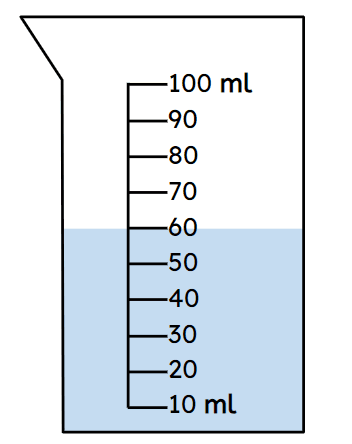Myths about teaching can hold you back
- Year 2
Volume and capacity can be measured in litres and millilitres
I can describe the volume of a litre and a millilitre, and choose which unit might be best to measure different capacities and volumes.
- Year 2
Volume and capacity can be measured in litres and millilitres
I can describe the volume of a litre and a millilitre, and choose which unit might be best to measure different capacities and volumes.
These resources were made for remote use during the pandemic, not classroom teaching.
Switch to our new teaching resources now - designed by teachers and leading subject experts, and tested in classrooms.
Lesson details
Key learning points
- Volume and capacity is measured in litres and millilitres.
- One litre is about the capacity of a large carton of juice.
- One millilitre is about the volume of a raindrop.
Keywords
Capacity - The amount of liquid something can hold.
Volume - The amount of space something takes up.
Litre - A unit of measure (about the capacity of a large carton of juice).
Millilitre - A unit of measure (about the volume of a rain drop).
Common misconception
Children may find it difficult to explain the difference between capacity and volume.
Look at examples of different containers containing different amounts of liquid and use these stem sentences to support their learning. 'The volume of liquid in A is _ than the volume of liquid in B.' 'The capacity of A is _ than the capacity of B.'
To help you plan your year 2 maths lesson on: Volume and capacity can be measured in litres and millilitres, download all teaching resources for free and adapt to suit your pupils' needs...
To help you plan your year 2 maths lesson on: Volume and capacity can be measured in litres and millilitres, download all teaching resources for free and adapt to suit your pupils' needs.
The starter quiz will activate and check your pupils' prior knowledge, with versions available both with and without answers in PDF format.
We use learning cycles to break down learning into key concepts or ideas linked to the learning outcome. Each learning cycle features explanations with checks for understanding and practice tasks with feedback. All of this is found in our slide decks, ready for you to download and edit. The practice tasks are also available as printable worksheets and some lessons have additional materials with extra material you might need for teaching the lesson.
The assessment exit quiz will test your pupils' understanding of the key learning points.
Our video is a tool for planning, showing how other teachers might teach the lesson, offering helpful tips, modelled explanations and inspiration for your own delivery in the classroom. Plus, you can set it as homework or revision for pupils and keep their learning on track by sharing an online pupil version of this lesson.
Explore more key stage 1 maths lessons from the Sense of measure - capacity, volume and mass unit, dive into the full primary maths curriculum, or learn more about lesson planning.

Licence
Prior knowledge starter quiz
6 Questions
Q1.We use a balance to compare the __________ of objects.
Q2.Compare the masses of the block and the toy car. The block is __________ the toy car.

Q3.The children are comparing the mass of a water bottle, a notebook and a some crayons. Match the parts of the sentence correctly.

the heaviest object.
the lightest object.
heavier than the notebook but lighter than the water bottle.
Q4.The objects have been ordered, starting with the lightest. Which statements are true?

Q5.Compare the masses. 4 kg is __________ 4 g.
Q6.Order the masses starting with the heaviest.
Assessment exit quiz
6 Questions
Q1.Match the parts of the sentence correctly.
the amount of liquid a container can hold when it is full.
the amount of liquid in a container.
Q2.Which of these standard units could be used to measure capacity and volume?
Q3.Which of these containers have the capacity of about one litre?
Q4.Match each volume of liquid to the correct amount.
1 ml
13 l
13 ml
1 l
Q5.What is the volume of liquid in this beaker? ml



